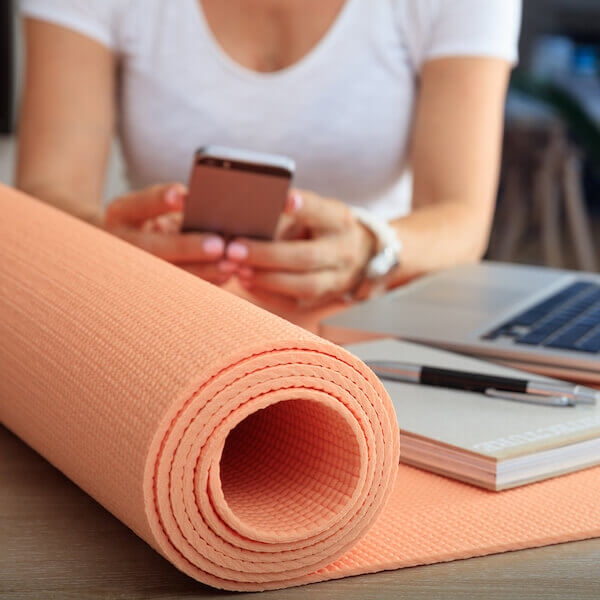Wellness challenges are a great way to engage employees and boost overall wellbeing. A successful challenge will foster some friendly competition while encouraging everyone on the team to work on building better habits. The benefits of this kind of initiative can be many, including a mental health boost, improved physical health, and enhanced employee relationships.
To get started, you will need a long list of wellness challenge ideas to form the outline of your event. In this article, we’ve assembled 18 employee wellness challenge ideas that you are welcome to use in your own event.
#1 – Read about anything but work
When was the last time you read something that wasn’t related to work? For most of us, it’s been too long. One of the best activities to include in your wellness challenge is a reading session. For example, you could set a target of reading for 30 minutes in a given day to accomplish this task and earn points.
Even for those who enjoy reading, it’s easy to fall into the habit of only reading articles and books that have career implications. Unfortunately, this turns reading into a chore rather than an enjoyable hobby. For this challenge, encourage participants to read for fun. It could be fiction best-sellers, or non-fiction books on topics of personal interest. Whatever the case, adding reading to your challenge will help team members remember how much fun this habit can be.
#2 – Eat some veggies
Adding healthy foods to a wellness challenge is an easy target, but it can be hard to quantify this activity. What counts as a healthy food, and how much of it needs to be eaten?
The best approach here is to keep it simple. Set a number of different fresh veggies to eat in a day to satisfy this activity. For instance, it might be three different veggies in a day, with no particular requirement for quantity. Just making a point to eat a variety of veggies is a step in the right dietary direction, so this is a good inclusion in your challenge.
#3 – Get enough sleep
This might seem too passive to count as an ‘activity’ in your challenge, but sleep is extremely important to health and wellness. And, in the modern world, many people fall well short of the sleep they need to be at their best.
For one component of your challenge, add a nightly sleep milestone goal, such as seven hours. For many of your participants, meeting that goal will mean reorganizing their schedule to get to bed earlier each night. Of all the various activities that you can include in a challenge, this one can have the greatest impact.
#4 - Meditation
There isn’t enough time for quiet in the world today. You can encourage your challenge participants to enjoy some quiet time to focus on their thoughts by adding meditation to your list. Even something as short as 10 minutes can have a valuable impact.
#5 – A walking goal
Fitness endeavors are intimidating for many people and for various reasons. But walking is something that feels approachable for anyone, unless they have a physical disability. So, consider using a walking goal as one of the fitness components of this challenge.
You’ll want to design this in such a way that it can work for everyone. For instance, consider giving one point in the challenge for every mile walked, or for every 15 minutes of walking. This is more manageable than setting the baseline at something like 5 miles of walking, where a certain level of fitness will be required to participate.
#6 – Take time to chat
Just as there isn’t enough time to think quietly in the world today, there also isn’t enough time to talk for no other reason than to have an enjoyable chat with a friend or family member. Setting one of your activities in the challenge as a 15-minute non-work conversation will encourage employees to reach out and have meaningful conversations with people they may otherwise only text from time to time.
#7 – A screen break
We are all guilty of it – try as we might, many of our waking hours are spent staring at one screen or another. A wellness challenge is a great opportunity to break this habit and spend a little more time away from technology.
There are many different ways you can structure this part of a challenge. For instance, you could set a cap on phone screen time during any given day – participants need to stay under that number to succeed. Or, you could set a goal for consecutive hours without using a screen. This is harder than it sounds, so even going two hours without a screen could be seen as a win.
#8 – Water target
One easy step many people can take toward improved health is drinking more water. These days, many of us don’t drink enough fluids during the day – and if we do drink something, it often has calories in it, and plenty of sugar at the same time.
Setting a target of drinking 64-ounces of water during a day is an easy activity to add to your challenge. Water is readily available, comes along with no calories, and can help improve health in a variety of ways.
#9 – Stretching session
Along the same lines as walking, stretching is another physical activity that is easy for anyone to get started. Just set a target of one stretching session during a day – that session could last for 10 or 15 minutes. Not only can daily stretching improve blood flow and loosen up muscles, but it may also encourage participants to engage in other forms of exercise.
#10 – A healthy start
For many in the modern world, breakfast has gone horribly wrong. These days, it’s often sugary, carb-laden foods that are consumed for breakfast. It’s hard to imagine a worse way to get the day started from a dietary perspective.
To help your team members break this bad habit, include a breakfast-related activity in the challenge. It could be as easy as awarding points for eating a breakfast that does not include any artificial or sugary foods.
#11 – Prep for sleep
We already talked about the importance of sleep. Not only is it important to get enough sleep, but it’s also important to prepare your body for sleep. With that in mind, consider adding an activity that asks participants to put down their devices and turn on their TVs for an hour before going to bed. Cutting out screens before bed may make it easier to fall asleep quickly, and this time can be used for some of the other points in the challenge like reading or meditating.
#12 – A quick declutter
Messy spaces not only make it hard to get anything done, they also make it hard to keep your mind clear and relaxed. A 10-minute cleanup session could be rewarded in your challenge as a way to encourage employees to stay organized.
It doesn’t matter what space is cleaned up for this part of the challenge. It could be a work desk, but it could also be a car, the kitchen at home, or any other messy space.
#13 – Next day goals
One of the best ways to have a productive day is to set the stage for that day the night before. By listing out tomorrow’s activities today, it will be easier to jump right into action when the morning arrives. Points in your challenge can be awarded for every day that is planned out the night before. You don’t need to require your participants to plan out every single minute of the day – even a rough outline with a few key points will do the job.
#14 – Stair stepping
This is a great one for companies who work in large office buildings. Instead of jumping in the elevator, or on the escalator, encourage employees to use the stairs. Every day that is managed completely on the stairs will earn points in the challenge.
#15 – New recipe experiment
One of the hard parts about following a healthy diet of fresh-cooked foods is the repetition. If you only know a few recipes that you consider healthy, you may get tired of them and reach for fast food too often as a result.
With this activity, you award points each time a participant tries a new recipe for a home cooked meal. By being proactive about cooking new things at home, it’s less likely that those in the challenge will settle for unhealthy alternatives prepared at restaurants.
#16 – Money manager
It’s easy to fall into bad spending habits when trying to keep up with a busy day to day routine. And, of course, wellness is often tied to financial stability, so working on better money management is applicable to a wellness challenge.
The task here is simple – ask participants to keep a spending journal. They don’t need to share the numbers with anyone else, but simply tracking spending closely is a great way to cut out the unnecessary waste.
#17 – Test out a new hobby
Once into the workforce and the busyness of adult life, many people stop trying new things. This is a shame, and it can cause life to feel stale and repetitive. Another great activity for your challenge is to promote the idea of testing out a new hobby – or a few new hobbies. Even if the new hobby doesn’t stick over the long run, trying something new is a great way to gain a fresh perspective on life and the world around you.
#18 – Be nice
Perhaps nothing else can improve wellness more than simply being nice and having others be nice to you. The concept of nice is often lost, especially in the competitive business world.
Being nice can mean many different things, and all of them should qualify for your challenge. It can be simply complimenting someone on their good work or doing something to help someone else make it through their day a little easier. Whatever the case, being nice makes people feel good and takes them closer to the wellness they seek.
The best way to find out what your employees need from a wellness challenge is simply to ask. To get started, check out this Essential Guide to Employee Experience Surveys.
Learn what your employees think of your wellness challenge



